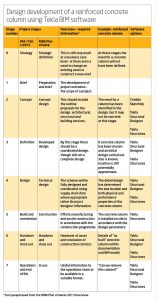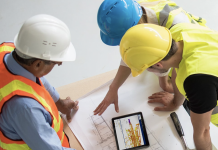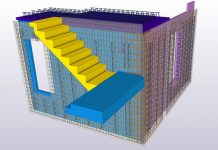Understanding the appropriate level of definition (LOD) throughout a project is vital to implement BIM efficiently and successfully. Here, Duncan Reed, Digital Construction Process Manager at Trimble explains more
BIM is a process that can bring efficiencies to a company’s existing practices in order to deliver projects quickly, competently and more reliably for clients. However, to maximise on these efficiencies, the project team must clearly understand how much information is required for each different stage of a project. Indeed, too little information and risks may not be effectively managed, and too much information and waste can be added into the process.
This is where the term Level of Definition (LOD) comes into play, and potentially where the confusion begins too. Level of Definition is a UK BIM term defined in PAS 1192-2:2013 and is made up of two distinct requirements.
3.30 Level of Definition:
Collective term used for and including “level of model detail” and the “level of information detail”. NOTE: The “level of model detail” is the description of graphical content of models at each of the stages defined. The “level of model information” is the description of non-graphical content of models at each of the stages defined.
In essence, LOD refers to the amount of graphical and non-graphical detail provided at different stages of a project. As such, a clear understanding of its meaning and purpose is important. This is considerably different to the term LOD that is used in the United States of America, where it means Level of Development. Before the publication of PAS1192-2:2013 many UK BIM documents used this US terminology in the absence of anything else to reference.
However, it is very easy to determine whether a project is using the US or UK terminology. Here in UK, Level of Definition is aligned to the Digital Plan of Work (DPoW), created by the UK BIM Task Group, which provides the UK construction industry with an eight-stage (zero – through to seven) design, construction and operation plan that encompasses the information requirements throughout the whole life of an asset. Furthermore, the NBS BIM Toolkit gives high-level guidance as to what Level of Detail and what Level of Information should be produced at each of the stages by the various members of the project team.
In contrast, the US system defines the stages of increased model development – as more detailed graphical representations – using the terms LOD100, LOD200, LOD300, LOD350, LOD400 and LOD500.
When a company starts its BIM process – at any of the eight stages defined by the DPoW – it needs to know how much information it is expected to provide. To get the best out of BIM, it is vital that a project team member does not over produce or under deliver on information for the model. If this does happen, the lean principles, which underpin BIM, are unlikely to be realised.
This point is illustrated in the table below (please click on the image to expand it), where Trimble’s Tekla Structural Designer and Tekla Structures have been used to develop the information for a concrete column. It shows the process of designing and detailing a building structure using BIM.
In the early stages of the project, the structural analysis is the most important factor. By stage three, the sizes of the structural members have become determined, but their exact location may not have been fixed. As the project progresses to stage four, the locations of the members, along with their physical and performance properties need to be determined.
At the end of stage five, the level of model definition needs to be completely defined. This is the point where the structure is procured from a specialist supplier, in this case, a precast concrete frame manufacturer. Models developed in Tekla Structures provide this level of model definition and are therefore fabrication ready, bringing even greater efficiencies to these processes.
Accurate member sizes and accurate geometry, as we all as embeds, couplers and reinforcement fabrication information are generated directly from the 3D models.
By adopting this staged approach to develop a design, and using digital information to share and coordinate, the processes deliver greater value to the project team. By contrast, detailing the reinforcement required for a concrete column at stage two is pointless, as the framing material has not been decided and the scheme may ultimately choose a steel frame solution at stage three.
It is very easy to produce too much information too soon in a project, so for BIM to be used successfully, the team should start by defining what information is important to them and when in the lifecycle of the project. This is one of the key requirements in the Project BIM Execution Plan. Here the correct level of model definition over the life of a project should be defined and recorded at the outset so that all parties involved understand what they are being asked to deliver.
Using software that is capable of delivering a model to the required levels of definition is important. The Tekla suite from Trimble provides support through the eight stages of the DPoW and offers a high level of transparency for all project team members – ensuring clarity, removing the need for rework and ultimately driving waste out of the construction process.
For more information, please visit www.tekla.com/uk/solutions
. . . . . . . . . . . . . . . . . . . . . . . . . . . . . . . . . . . . . . . . . . . . . . .
Duncan Reed
Digital Construction Process Manager
Trimble Tekla
Tel: +44 113 887 9790
www.tekla.com/uk
Twitter @Trimble_TeklaUK
Twitter @djhreed67















